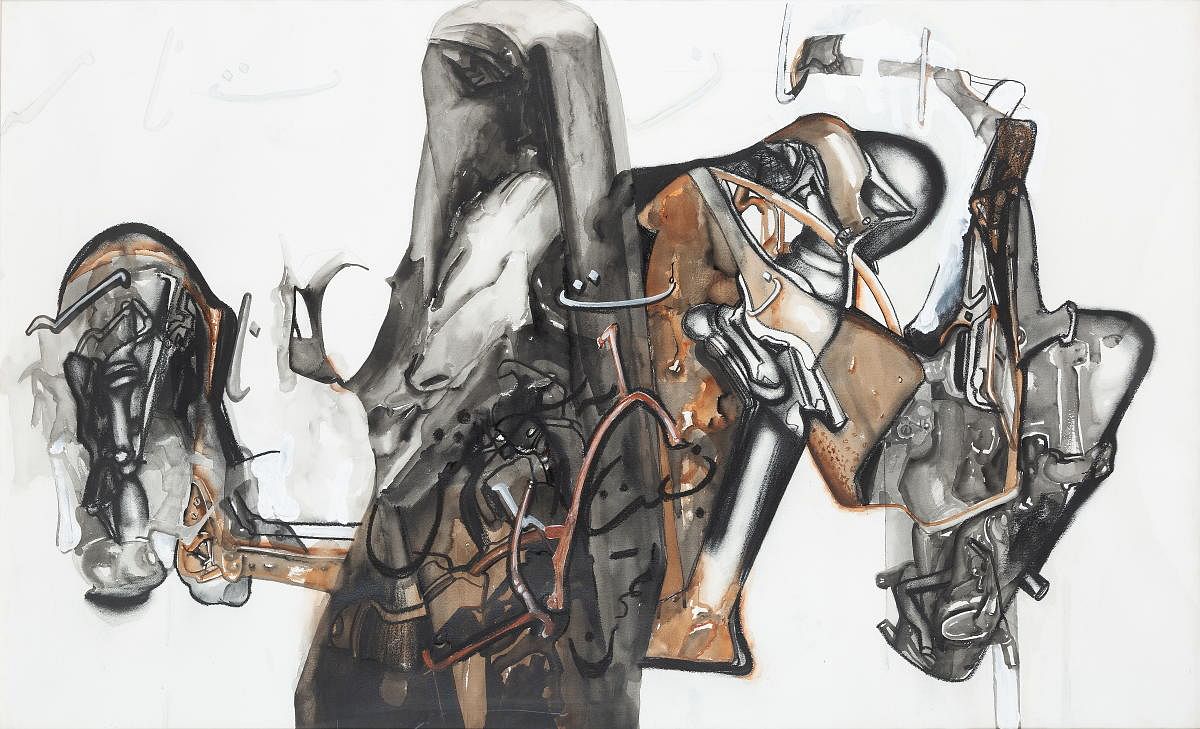
The works of artists such as Ganesh Haloi, Sakti Burman, Manjeet Bawa, Paritosh Sen, Akbar Padamsee, S H Raza and Sanjay Chitara’s Kalamkari style of paintings as well as a collection of fine bronze bhuta masks from South Karnataka are on display at an online art collective, presented by Tap India.
As a response to the challenges being faced by artists during the pandemic to make their works accessible and visible, Chennai-based Sharan Apparao, founder of Apparao Galleries, spearheaded the idea for Tap India. The initiative began with the recent launch of the website theartplatformindia.com, which brings together 14 galleries from across the country. “There is variety in the works displayed; they are not just edgy and contemporary, but also classical. There are works by artists such as Ganesh Pyne and Somenath Hore too,” says Sharan.
The 14 galleries include Akar Prakar, Anant Art, Anupa Mehta Arts, Apparao Galleries, Art Heritage, Gallery Art Motif, Emami Art, Exhibit 320, Gallery Espace, Gallery White, Latitude 28, Gallery Threshold, Tribal Art Forms and Wonderwall Gallery.
The website is easily navigable. Sharan says: “The hard part was marrying the functionality of technology with the exhibition of art. A gallerist has different aesthetics from a tech person, so to combine the two was a big challenge.”
In step with change
Sharan has been a curator for more than three decades, but she believes in being in step with changing times. “The younger generation now works online, so I think there is no reason why art should not be online. We have been working online for a long time too. We send images digitally to buyers.” Sharan says a lot of thought went into creating the website to ensure almost the same experience online as in a gallery. “The website has a view room that gives you an idea of how the artwork looks in a physical space. There is also a feature using which you can scroll through images that provide details of the main artwork in a particular setting so that you can see it in any ambience you would like to.”
An element of human interaction has been introduced through curated online events. “We will have short interviews with the artists, curators and owners. People follow our social media for more events,” says Sharan. Another advantage of going online is that buyers don’t have to go to Delhi, Mumbai and Baroda to look at the work. Sharan says: “They can get a fair idea by looking at the site and can communicate with the gallerists directly.”
Vinit Nair, founder of Gallery White in Gujarat, (which is showcasing works of three artists: N Divya, Sarika Mehta, and Alok Bal) says: “All three artists are equally represented by my gallery. Two of their works were made during the lockdown and reflected their emotions. I wanted to conceptualise the show on the word ‘home’, because ‘home’ has become very important during these pandemic times.”
He says though that the feeling of viewing a large painting online is not the same as when you view it in a gallery. “However, I think going forward, both online and physical galleries need to co-exist.”
Renu Modi, founder of Gallery Espace (Delhi), which is showcasing the paintings of Tanmoy Samanto, says: “Tanmoy is one of my represented artists. I was supposed to organise a physical show of his works, but there were no brick-and-mortar exhibitions in the gallery, so this was a great opportunity to showcase his work and give it more accessibility.”
The art works are priced between Rs 50,000 and Rs 5 lakh. The exhibitions are updated every six weeks.